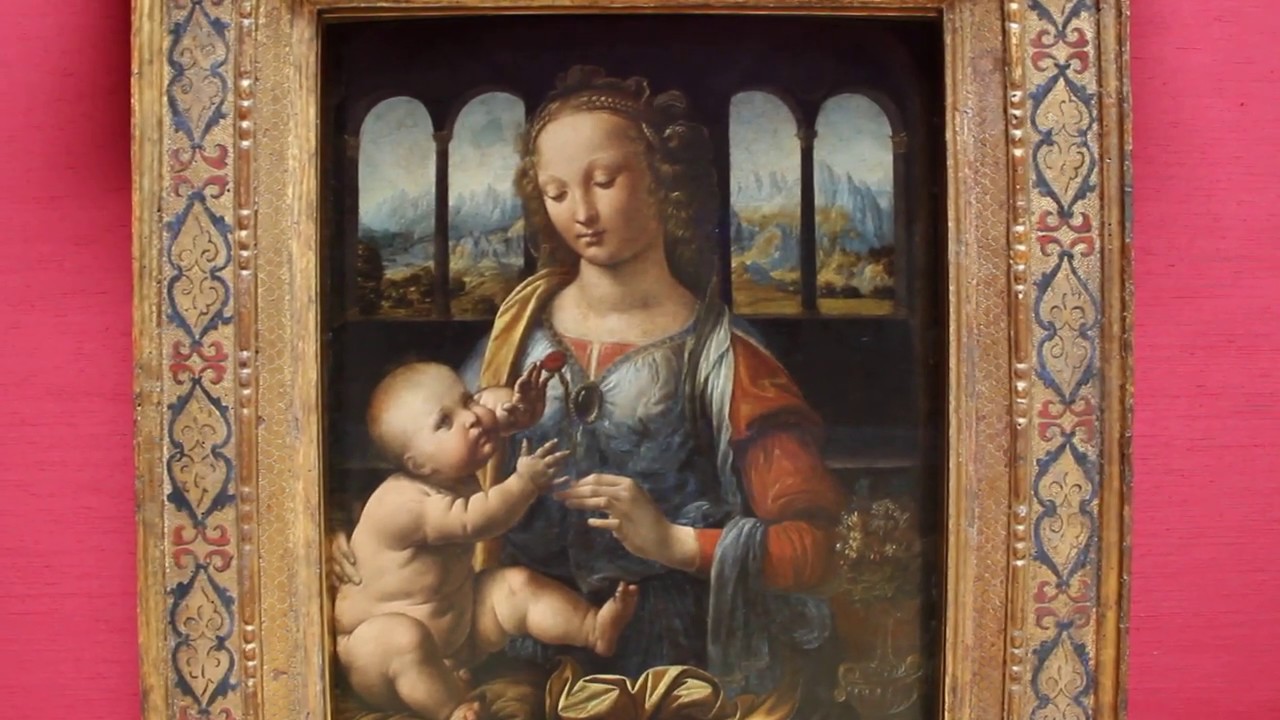
Robert Draws – Madonna of the Carnation is one of Leonardo da Vinci’s early religious works. The painting presents the Virgin Mary holding the infant Christ with a carnation in her hand. This flower symbolizes Christ’s future suffering and sacrifice for humanity. Leonardo skillfully blends emotion and symbolism in this intimate mother-child scene. Although simple at first glance, every detail in this piece carries deep meaning. Through light, gesture, and expression, a sacred narrative is visually communicated. The artwork combines spiritual themes with the realism of Renaissance portraiture. A deeper look reveals the layers of theological significance embedded in the image.
In Christian iconography, the red carnation is often a symbol of love and sacrifice. It represents the suffering and eventual crucifixion of Jesus Christ. Mary’s act of holding the flower shows her awareness of Christ’s destiny. The gesture is gentle, but filled with silent foreshadowing. By placing the flower near the child, Leonardo links beauty with pain. The message is that divine love often comes with sorrow. This duality enriches the emotional tone of the painting. The symbolism offers both visual beauty and spiritual reflection.
“Read about: The Angel’s Revelation: A Closer Look at Leonardo’s Annunciation”
Leonardo’s training in Florence shaped his technique and subject matter. Soft transitions in light and shade, known as sfumato, were applied masterfully. Figures appear lifelike and three-dimensional, enhancing realism in the scene. The background is subtle but contributes depth to the overall composition. Warm colors are contrasted with cooler tones to create visual harmony. The composition draws the viewer’s eye toward the flower and infant. Balance and perspective guide the emotion of the image without distraction. This method was later perfected in Leonardo’s more mature works.
Mary’s face is calm, yet reflective, conveying complex maternal emotions. She holds her child tenderly while contemplating his future sacrifice. Leonardo captures a quiet moment of connection and foreknowledge. The infant Christ looks healthy and serene, unaware of his fate. Viewers feel the emotional weight behind the peaceful composition. Love, fear, and divine duty are silently expressed in their expressions. Human experience is intertwined with sacred purpose in this portrayal. Through this, Leonardo shows the human side of religious devotion.
“Read more: Trapped and Freed: The Rescue Story of Leah from Human Trafficking”
Leonardo da Vinci painted this artwork around 1478 in Milan. At that time, his style was shifting significantly. Moreover, this painting reflects a period of creative exploration. He began to explore human anatomy and emotional expression more deeply. Notably, traces of Andrea del Verrocchio’s influence appear in several elements. Furthermore, his technique grew more refined during this phase. Although not the most famous piece, it carries great artistic significance. Additionally, it demonstrates his evolving mastery of light and gesture. Over the years, many scholars offered various interpretations. However, the core message of sacrifice remains consistently powerful. Therefore, the painting stands as a meaningful part of his legacy. Eventually, it became part of the Alte Pinakothek collection in Munich. Consequently, art enthusiasts around the world can view it there. Ultimately, this piece represents a crucial moment in Leonardo’s artistic journey.